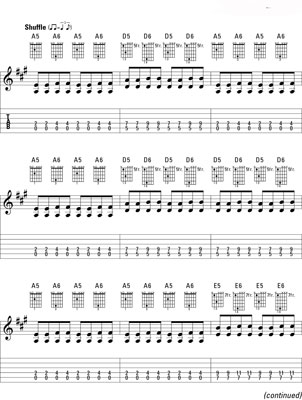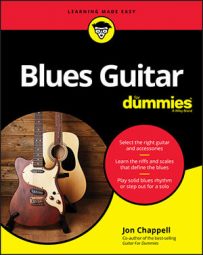If you have the basic 12-bar blues under your belt, it’s time to learn how to play the Jimmy Reed move on your guitar. This move will help you shake things up a bit. The Jimmy Reed move has been a blues guitar and rock guitar staple forever.
The Jimmy Reed move — named after the Chicago harmonica player, singer, and guitarist — involves going from the fifth to the sixth degrees in each chord (the note E in a G chord, A in a C chord). Chuck Berry made this technique famous in a straight-eighth, rock ’n’ roll setting in the late ’50s and ’60s. For now, don’t worry about converting numbers to notes for the I, IV, and V chords; just figure out the left-hand part.
To play a “move,” you put your left hand in motion. You can think of this move in two ways: as an extra chord inserted in between the ones you already know or as a simple one-finger move in the left hand. Whichever way works for you is the right one!
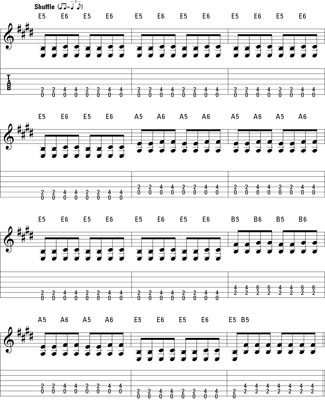
Click here to download and print this guitar tab.
One of the best things about the Jimmy Reed move is that it works so well in different chords and keys. When played in different keys, the figure preserves the original relationship of the notes in the new key, but because it’s in a different key, it just sounds, well, different. Not better or worse, perhaps, just different — and still very cool!
Jimmy Reed move in G
If you had to play in the key of G, you can still throw in the Jimmy Reed move. This move has a different character and is a little easier to play than the same move in E. You can view the move as either a new chord inserted between the ones you already know or as just simply moving a finger over to play a previously open string on beats two and four.
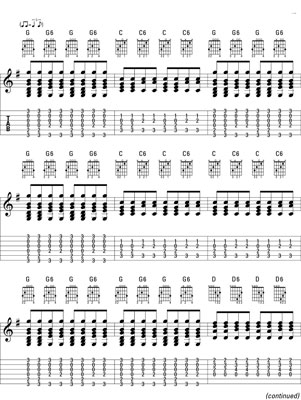
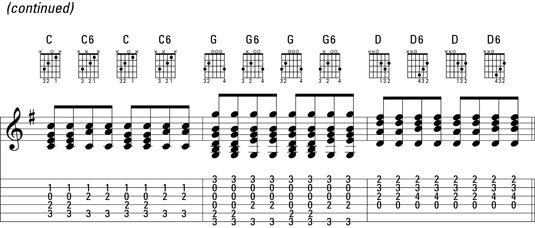
Click here to download and print this guitar tab.
Jimmy Reed move in A
When you use the Jimmy Reed move in A, the move travels up the neck of the guitar to grab the IV and V chords. This sound is very rock ’n’ roll (and I mean that in a good way) and has a less folksy character than the G progression. The blues move in A has an entirely different feel than the same move in G, yet they’re only one letter away.
